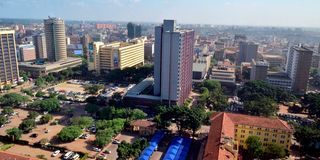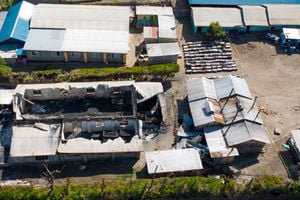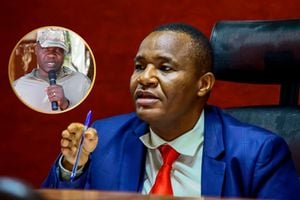Scandal of the super-rich profiting from the pain of the poor

An aerial view of Nairobi City. A 2022 Oxfam report stated that “the gap between the richest and poorest in Kenya has reached extreme levels, with less than 0.1 per cent of the population (8,300 people) owning more wealth than the bottom 99.9 per cent (more than 44 million people).
The above title is partially borrowed from a 2022 Oxfam report. The report stated that “the gap between the richest and poorest in Kenya has reached extreme levels, with less than 0.1 per cent of the population (8,300 people) owning more wealth than the bottom 99.9 per cent (more than 44 million people).
The richest 10 per cent of people in Kenya earned on average 23 times more than the poorest 10 per cent. The number of super-rich in Kenya is one of the fastest growing in the world”.
An examination as to why the economy is at crisis levels is because globally, the Covid-19 pandemic saw an increase of unprecedented wealth go to the richest while disenfranchising the poor. While on one hand, the pandemic was “full of sorrow and disruption for most of humanity” on the other hand, it was one of the “best times in recorded history for the billionaire class”, according to Oxfam.
It was no different in Kenya, where public debt rose by 16.82 per cent to Sh7.34 trillion between March 2020 and March 2021. While the government claimed that this borrowed money was disbursed to vulnerable households and infrastructure investments, research done by Human Rights Watch stated that disbursements of this money were “shrouded in secrecy, lacked transparency and accountability”.
The country, therefore, is under the weight of debt, but there is little evidence of it having improved the livelihoods of the poor. Would it, therefore, be far-fetched to conclude that Covid-19 created a few billionaires in Kenya, further increasing the gap between the rich and the poor?
Bottom-up economy
The current administration rode to power on a narrative of a “bottom-up” economy and creating the impression that the government’s focus would be pro-poor, including perhaps taxing the wealthiest 10 per cent. The latter is what countries that want to really improve the livelihoods of the bottom do, even if it is for a limited time, so as to improve public goods.
Ensuring efficient and low-cost public goods in healthcare, or in education or food security is what really improves the lives of the poor. However, the proposed Finance Bill and the three per cent housing levy, if implemented, may further increase the gap between the rich and the poor.
Presidential Economic Adviser David Ndii wrote a compelling article published in April 2023 titled: ‘Africa’s infrastructure-led growth experiment is faltering. It is time to focus on agriculture.’
In this article, Dr Ndii states that ‘the real binding constraint on growth in Africa is low agricultural productivity’. He goes on to say that ‘agriculture-led growth is more compelling in Africa than the prevailing preoccupation with infrastructure.’ At what point did Dr Ndii’s advice change from focusing on agriculture, which he described as having ‘the highest returns on investments’, to infrastructure-led growth that he described as “flawed”?
Most countries that have moved from an agrarian economy to an industrialised one have first embarked on agricultural productivity, increasing agro-processing and exports, then used incomes from agriculture for infrastructure development. However, African governments seem obsessed with infrastructure projects because the procurement of these mega projects provides business opportunities for influential people as well as kickbacks. This corruption is what is driving income inequalities.
Todaro, in his book Economic Development, argues that income inequalities undermine the socio-economic stability and solidarity of a country, as it diverts resources from productive purposes that could have led to faster growth.
Let those who have ears hear the cry of the people.
Ms Gachire is a Public Policy Trainer; [email protected]





